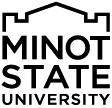Minot State is here to help.
Minot State University strongly encourages individuals who have experienced, have knowledge of, or have witnessed gender-based harassment, sexual harassment, sexual assault, domestic and dating violence, stalking, sexual exploitation, or other forms of sexual and related misconduct committed by or against students, staff, or faculty to report the incident immediately to the University.
Any person may report sex-based harassment (whether or not the person reporting is the person alleged to have experienced the conduct), in person, online, by mail, by telephone, by video, or by email, using the contact information listed for the Title IX Coordinator.

Dr. Lisa Dooley, Title IX Coordinator
Office of Title IX
Memorial Hall, 4th Floor, Room 412
500 University Ave W., Minot, ND 58707
(701) 858-3447
Email: lisa.dooley@minotstateu.edu
The University strongly supports a complainant’s desire for confidentiality or decision not to pursue resolution. If the complainant decides not to pursue resolution, the University will honor the complainant’s request if doing so does not impact the University’s ability to provide a safe and non-discriminatory environment for all members of the University community, including the complainant.
Regardless of whether the complainant requests confidentiality or decides not to pursue resolution, the Title IX Coordinator will assist the complainant with reasonable and available accommodations, which may include academic, housing, transportation, employment, and other accommodations. These accommodations will vary depending on the nature of the reported prohibited conduct and the wishes of the complainant regarding confidentiality. If any such accommodation impacts the respondent, the respondent will be provided with written notice of the report, which includes, as known, the date, time, and location of the alleged prohibited conduct and the underlying factual allegations. Therefore, certain accommodations may not be available if the complainant wishes to maintain confidentiality.
Mandated Reporters
Students should be aware that all disclosures of gender-based harassment, sexual harassment, sexual assault, domestic and dating violence, stalking, sexual exploitation, or other forms of sexual and related misconduct to a staff or faculty member will be reported to the Title IX Coordinator. All University offices and employees who cannot guarantee confidentiality will maintain your privacy to the greatest extent possible.
The University offers a number of confidential resources for individuals who are looking for support, or an opportunity to consider next steps, who need care, or who may be unsure about whether to report incidents to the University or law enforcement. Conversations with the University’s “confidential resources” are kept strictly confidential and, except in rare circumstances, will not be shared (including to faculty, coaches, parents, etc.) without explicit permission.
Confidential Employees include:
- University Student Health Clinic: 701.858.3371
- University Counseling Services: 701.858.3371
- University Pastoral: 701.858.4170
For additional confidential support resources other than those listed above:
- Domestic Violence Crisis Center: 701.857.2200
Report to Law Enforcement
All individuals are urged to report any conduct that may constitute a crime to law enforcement immediately. Police have a unique legal authority to seek and execute search warrants, to collect forensic evidence that may have been left at relevant locations, and to make an arrest when there is probable cause to believe that a crime has been committed.
Individuals have the right to make a report to Campus Security, and/or local law enforcement, or choose not to report. An individual may pursue either, both, or neither of these options. Reports to the University and law enforcement may be made simultaneously.
Individuals may contact law enforcement directly. Alternatively, students may seek assistance from the Title IX Coordinator when notifying the police. The Title IX Coordinator can assist in setting up an initial meeting with law enforcement.
Reporting the Incident to Law Enforcement
- Minot Police Department can be reached at any time by calling "911" for emergencies or non-emergency number is 701-858-0111.
A formal complaint asks the University to investigate whether the University's policies related to sexual harassment and other sexual misconduct have been violated.
Formal complaints are submitted to the University Title IX Coordinator and investigated by the Office of Title IX. If there is a finding of a policy violation by a Minot State University student, the Hearing Officers will consider appropriate sanctions, ranging from an admonition or warning up to and including dismissal or expulsion. The Title IX Coordinator can answer questions about the process for filing a formal complaint, and speaking to a Title IX Coordinator does not automatically trigger a formal complaint.
File a Formal Complaint
You may file a formal complaint alleging a violation of the University policies. To file a formal complaint, please submit your complaint in writing to the University Title IX Coordinator. Please note, your formal complaint:
- must be a document or electronic submission
- must contain your physical or digital signature, or otherwise indicates that you are the person filing the formal complaint
- must allege sexual harassment or other sexual misconduct against an individual and request that the University investigate the allegation(s)
- should state the name (if known) of the individual who you are alleging engaged in sexual harassment or other sexual misconduct and describe with reasonable specificity the incident(s) of alleged sexual harassment or other sexual misconduct, including the date and place of such incident(s).
- must be in your own words, and may not be authored by others, including family members, advisors, or attorneys
- should have an attached list of any sources of information (for example, witnesses, correspondence, records, and the like) that you believe may be relevant to the investigation.
Your complaint should not be delayed if such sources of information are unknown or unavailable.




